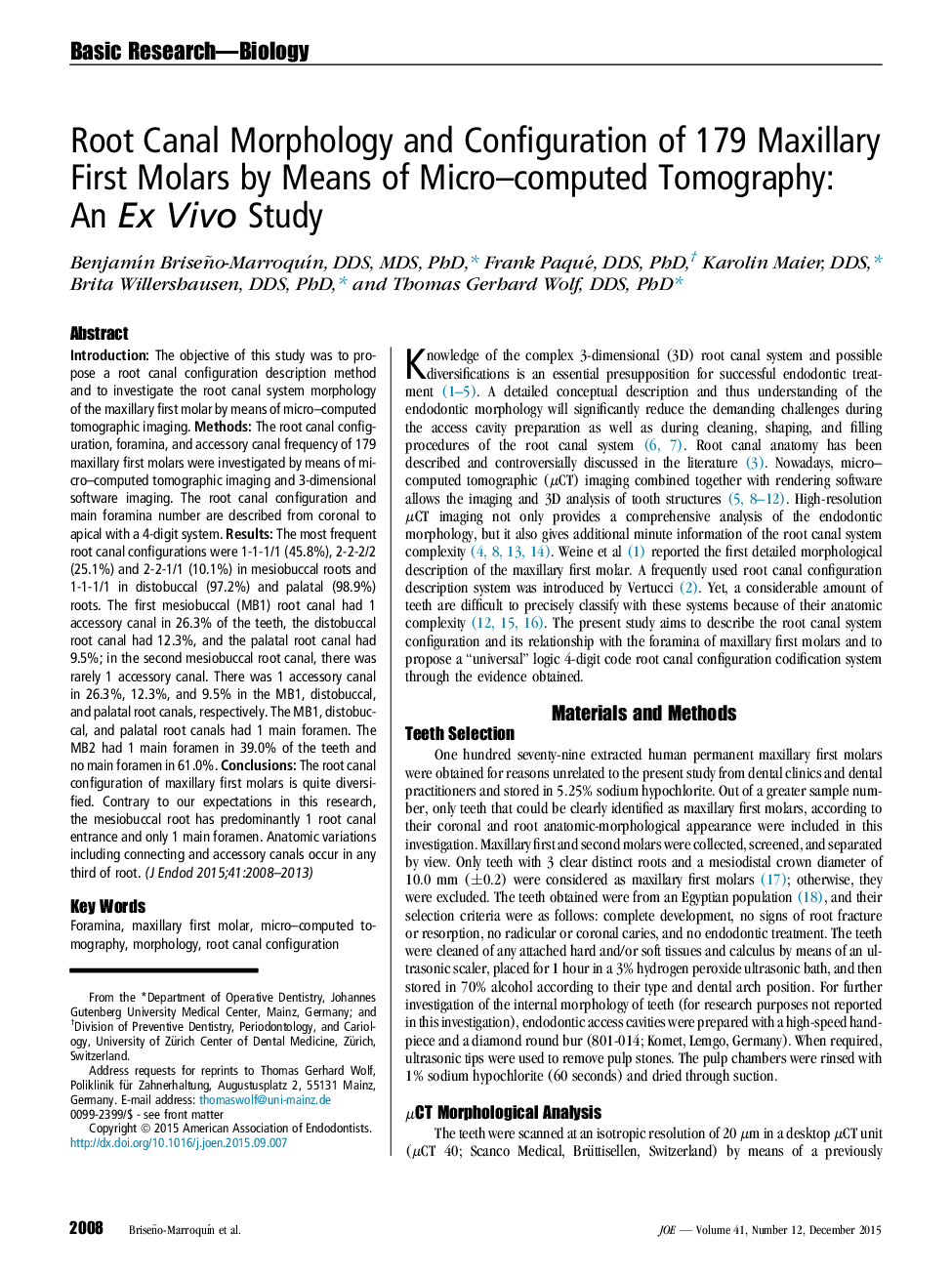| کد مقاله | کد نشریه | سال انتشار | مقاله انگلیسی | نسخه تمام متن |
|---|---|---|---|---|
| 3150224 | 1197502 | 2013 | 6 صفحه PDF | دانلود رایگان |

• The most frequent root canal configurations in the mesiobuccal root were 1-1-1/1 (45.8%), 2-2-2/2 (25.1%), and 2-2-1/1 (10.1%).
• The most frequently observed root canal configuration in the distobuccal and palatal root was 1-1-1/1 (97.2% and 98.9%, respectively).
• Accessory canals in the first mesiobuccal (MB1) and second mesiobuccal (MB2) root canals were observed in 30.8% and 94.4%, respectively, and in the distobuccal and palatal root canals in 84.9% and 88.3%, respectively.
• Up to 5 accessory canals were observed in 30.8% of the MB1 root canals, up to 3 in 5.6% in the MB2 root canals, up to 2 in 15.1% in the distobuccal root canals, and in 11.7% in the palatal root canals. Connecting canals between the MB1 and MB2 root canals were observed in only 2.9% of the teeth examined.
• The MB1, distobuccal, and palatal root canals had only 1 main foramen in 100%; 1 main foramen was observed in 39.0% in the MB2 root canal. One accessory foramen was observed in 7.3% in the mesiobuccal root and 1.1% in the distobuccal root. No accessory foramen was observed in the palatal root.
IntroductionThe objective of this study was to propose a root canal configuration description method and to investigate the root canal system morphology of the maxillary first molar by means of micro–computed tomographic imaging.MethodsThe root canal configuration, foramina, and accessory canal frequency of 179 maxillary first molars were investigated by means of micro–computed tomographic imaging and 3-dimensional software imaging. The root canal configuration and main foramina number are described from coronal to apical with a 4-digit system.ResultsThe most frequent root canal configurations were 1-1-1/1 (45.8%), 2-2-2/2 (25.1%) and 2-2-1/1 (10.1%) in mesiobuccal roots and 1-1-1/1 in distobuccal (97.2%) and palatal (98.9%) roots. The first mesiobuccal (MB1) root canal had 1 accessory canal in 26.3% of the teeth, the distobuccal root canal had 12.3%, and the palatal root canal had 9.5%; in the second mesiobuccal root canal, there was rarely 1 accessory canal. There was 1 accessory canal in 26.3%, 12.3%, and 9.5% in the MB1, distobuccal, and palatal root canals, respectively. The MB1, distobuccal, and palatal root canals had 1 main foramen. The MB2 had 1 main foramen in 39.0% of the teeth and no main foramen in 61.0%.ConclusionsThe root canal configuration of maxillary first molars is quite diversified. Contrary to our expectations in this research, the mesiobuccal root has predominantly 1 root canal entrance and only 1 main foramen. Anatomic variations including connecting and accessory canals occur in any third of root.
Journal: Journal of Endodontics - Volume 41, Issue 12, December 2015, Pages 2008–2013